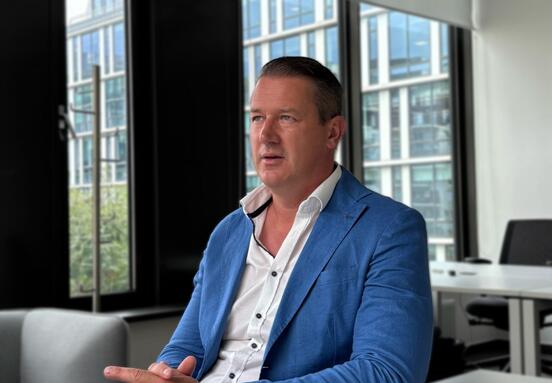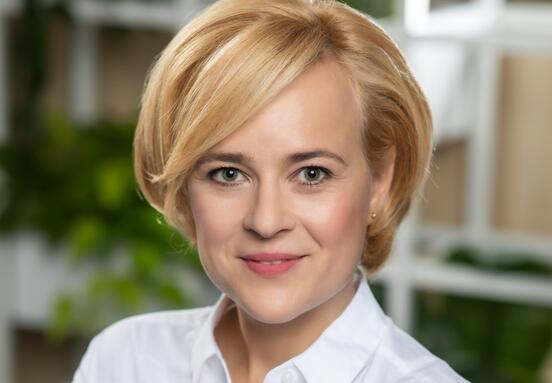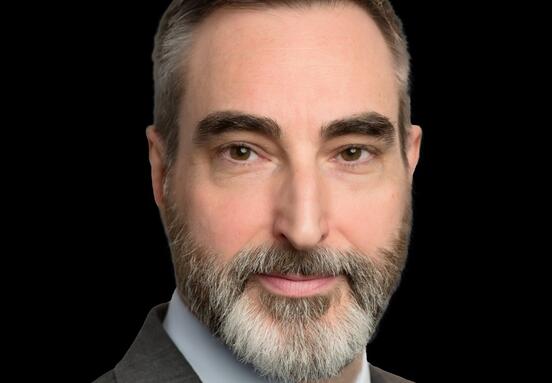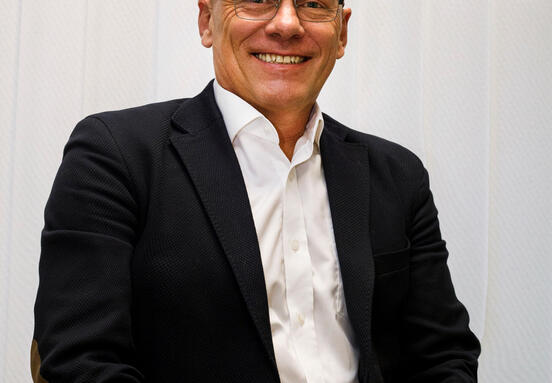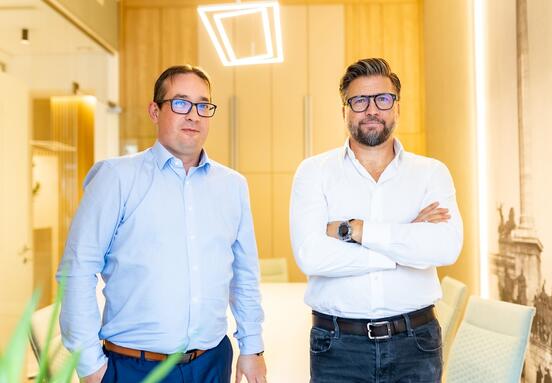Among other things, we touched upon the subject of the potential for the reuse of existing real estate, the leverage of the office market, HOP and Liget Center. Bonus: how to update a 70-year-old auditorium to satisfy modern standards?
- Congratulations on your promotion – as we have previously reported! If possible, please give us a brief summary of the main points of WING’s residential and office development strategy in Hungary!
- Thank you, I appreciate the opportunity, as WING has become one of the strongest and most significant real estate developers and investment groups in Central Europe. This potential is what we seek to harness in the implementation of our future plans. In terms of office developments, our primary goal is to build high-quality, modern, sustainably operated headquarters in good locations, typically for renowned domestic and multinational tenants, in order to meet their needs and aspirations. As far as Built-to-Suit office developments are concerned, we have completed a number of major headquarters projects over the last 25 years, thus having attained a unique list of references on the domestic office market. Just to mention a handful of examples, we managed to satisfy the special needs of tenants at the highest level of quality, developing headquarters for such well-established corporations as Telekom, Ericsson and Siemens-evosoft, and from the summer of this year, RTL Hungary will also set up its new headquarters at our newly renovated Liget Center Classic and Auditorium building complex. Currently, our flagship real estate development is the Liberty multifunctional complex, which will serve as the home for tenants such as GEODIS and eMAG, followed by a number of additional high-profile corporations this summer.
- What are your plans concerning the housing market?
- We see major potential in the domestic residential real estate market in the years to come. One of our objectives is to intensify our LIVING umbrella brand and to launch a number of projects in light of buyers’ demands and long-term trends, thus further diversifying our residential real estate developments. In the coming years we would like to secure our presence on the market with a number of additional developments featuring high quality, sustainable apartments. When implementing our projects, our primary concern is still to create properties that satisfy all needs, focusing on customer and environmental expectations in mind.
- Let’s get back to the subject of the office market! In the case of an office building, it sometimes takes 4, 5 or even 6 years to sketch out the initial concepts. How is it possible to anticipate changes such as the widespread adoption of ESG criteria? So the question is, how do you formulate plans?
- As a developer, it’s important that our investment decisions mustn’t be governed by the momentary changes of the real estate market and we must always plan at least four or five years ahead and base our strategy on medium and long-term trends. Basically, the answer lies in the question itself: recently, ESG and energy efficiency have truly become extremely important factors on the office market and in fact, I think they will be a driving force over the next ten years. Compared to the last 20 years, we see a shift on the office market in that instead of quantitative growth, the emphasis will be on quality and this trend will be underlined by ESG and energy efficiency considerations. However, the full picture is more complex, in which pricing naturally plays a key role, as all businesses monitor their costs meticulously. In recent years, one of the important factors has been the spread of home office schemes brought on by COVID, which is manifested in reduced office space for tenants as it seems that working from home will remain with us in the long term. At the same time, however, as a developer we can compensate the reduced office space by providing higher quality and specifically more expensive offices on the market. This is also due to the fact that companies, and corporations in particular increasingly demand higher quality. Naturally, there will still be a target group on the office market for whom the rental fees rather than ESG and energy efficiency will remain the decisive factor, yet I believe this will not be the case in the years to come.
- Which are the most important trends and, in view of the Western European markets, which will emerge locally sooner or later?
- The previously mentioned ESG and energy efficiency factors have already surfaced: they define market trends in Western Europe and are increasingly coming to the forefront locally as well. The combination of these two tendencies, post-COVID home office work as well as energy efficiency has a similar effect on the global as well as the domestic market: even internationally, higher quality emerges as a demand in a reduced office space. Another global similarity is that a general deceleration has been perceptible on the European real estate market as well, as the high interest rate environment is not favourable for real estate investments and developments. However, one of the highly positive features of real estate and particularly, commercial real estate is that with adequate occupancy levels, it remains inflation-proof, which means that recovery can be expected on the real estate market even in a moderately high inflation environment.
- WING’s buildings are also outstanding in terms of their architecture. How can economic as well as aesthetic and urban considerations be reconciled? How are compromises reached vis-a-vis value engineering?
- At WING, we believe that real estate development is an industry that encompasses many fields, in which economics, engineering, urban planning and art all play a role. We strive to balance all these disciplines, satisfying the demands of investors and buyers as well as business and environmental sustainability considerations, while also creating value. Throughout its 25-year existence, our group has been committed to the development of high quality and long-lasting real estate: we believe that a property should remain attractive – not just for the time of its sale – and provide long-term quality. A specific office market example is our Liget Center development, featuring an entirely unique content. We were tasked with establishing a modern office environment in an over 70 year-old Bauhaus style historic building. We also had to find a way to transform the Auditorium built in the socialist era to comply with current needs. The reason I chose this example is because we managed to find a timeless solution, one that can be considered WING’s hallmark. Also, it’s important to note that in this case, the renovation was an ingenious expansion as apart from the existing structures, we also created a newly-built boutique office building with a full glass facade, the Liget Center Vitrum.
- We haven’t talked about HOP yet. What is your goal with the development?
- This year, there are two trends on the office market with particular significance for us: first, we are in ongoing negotiations for additional Built-to-Suit projects, and secondly, our group is also continuously working on developing the HOP Technology Office Park, or HOP. As far as the latter is concerned, our goal is to establish a technology office park capable of satisfying the demands of the experts working here concerning the office environment as well as the special technical requirements of tech companies regarding the tenements. HOP is mainly focused on satisfying the needs of companies operating workshops, laboratories and warehouses as the buildings at the site feature heavy-duty, high-ceiling floors, particularly on the ground and first floors. Apart from its design, the site also has exceptionally good features in terms of its setting as it is located at a key transportation hub on Hungária körút, in close proximity to the City Park and only 10 minutes from the city centre, easily accessible from practically all parts of the city. The advantageous features of HOP are confirmed by our results: we have an occupancy rate of nearly 100% in the existing buildings, with nearly 40 thousand square meters left for additional developments at the site. As far as the housing market is concerned, we wish to increase our supply as we are experiencing growing demand for house purchases in terms of both the number of inquiries as well as house sales.
- WING is responsible for creating a number of buildings that define the cityscape. What are your views on the future of urban life?
- It’s customary for a real estate development firm to discuss its current investments and projects. Sometimes, however, it’s important to take a step back and consider, beyond the direct business figures, the various factors that shape our approach when deciding on the planning and preparations for the various projects. It’s important to note that at WING, we are not engaged in the further expansion of cities, but in developing an ever-increasing number of green areas and instead, and we are more deeply invested in the intensive European urban model. This means that throughout our development activities, we consciously opt for the renovation of old buildings with historic and cultural value. The reconstruction and expansion of buildings allow us to preserve the structures and renew them in a modern, functional sense. Additionally, renovation is a concept that places less burden on the environment and a greater emphasis on a circular, sustainable approach. As far as our residential development activity is concerned, we believe it is justified to implement intensive development projects wherever there is rail-bound public transport (subway, tram, train) capable of handling high traffic volumes. This way, people can benefit from the opportunities offered by the infrastructure, and the investments will yield both economic and social returns while also satisfying 21st century sustainability requirements in a comprehensive manner. Naturally, this requires establishing both green areas and additional social infrastructure, while the developments must consist solely of state-of-the-art, energy-efficient apartments.
Irodakereso.info

